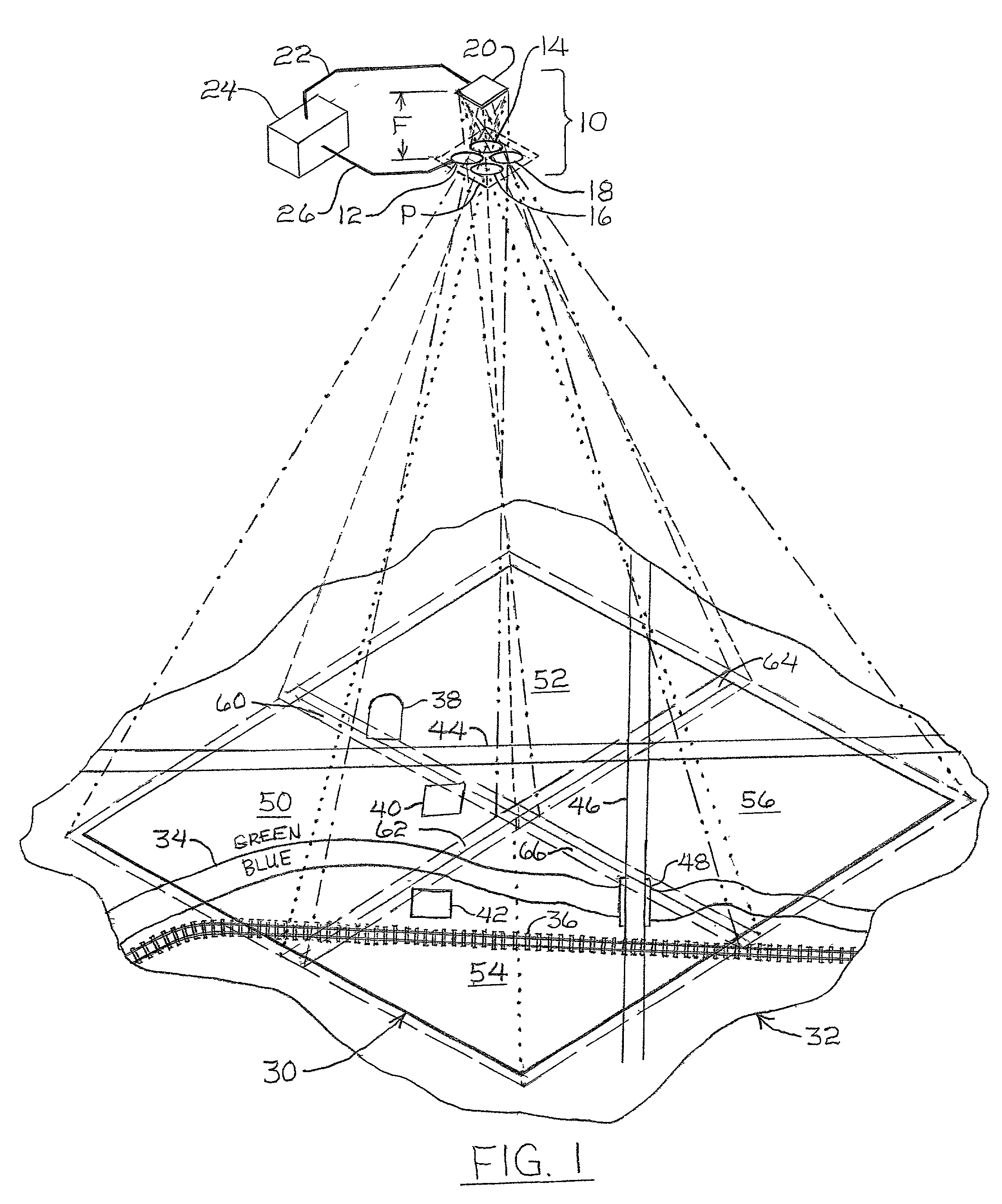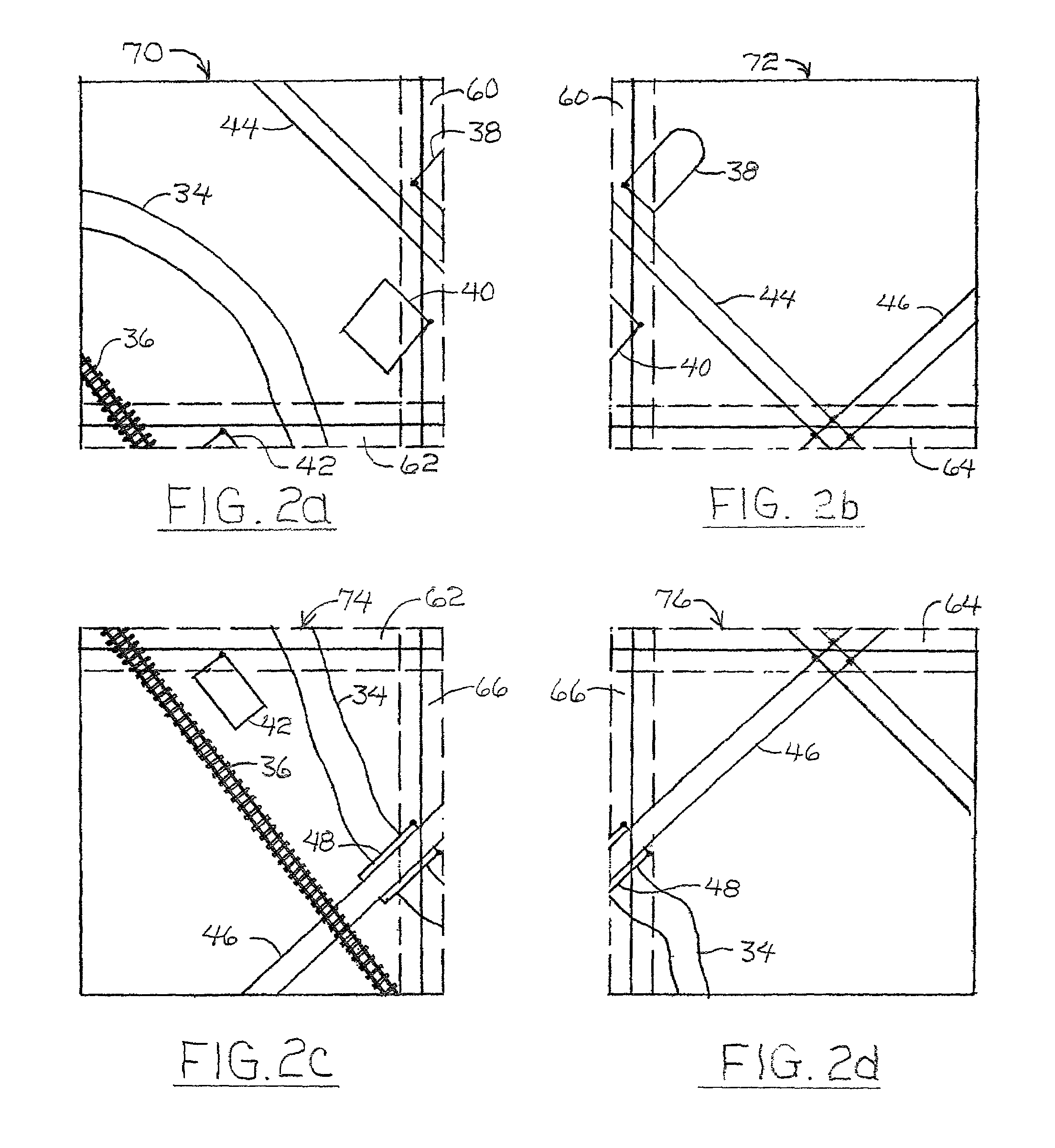Self-calibrating, digital, large format camera with single or multiple detector arrays and single or multiple optical systems
a large-format camera and detector array technology, applied in the field of photogrammetry, can solve the problems of distorting the image, unable to see the doors, windows, roof lines, etc. of the house, and be unable to discern the individual house built on the side of the mountain, and achieve the effect of high resolution
- Summary
- Abstract
- Description
- Claims
- Application Information
AI Technical Summary
Benefits of technology
Problems solved by technology
Method used
Image
Examples
Embodiment Construction
[0054]One of the simpler, yet effective, large format, digital camera systems of this invention is illustrated diagrammatically in FIG. 1. Essentially, the large area camera system 10 in FIG. 1 is represented by a plurality of lens systems 12, 14, 16, 18, all of which have the same focal length F and are positioned in a common plane P, and a photodetector array 20 positioned in the focal plane of the lens systems 12, 14, 16, 18, i.e., at a distance F from the plane P. The photodetector array 20 is connected electrically by suitable conductors 22 to a control circuit 24, which includes at least a microprocessor, input / output circuitry, memory, and power supply for driving the photodetector array 20, reading sub-image data out of the photodetector array 20, and storing such sub-image data. Other data processing functions, such as combining sub-images and / or image display functions, can be accomplished in the camera system 20 or with other peripheral data processing equipment.
[0055]The...
PUM
 Login to View More
Login to View More Abstract
Description
Claims
Application Information
 Login to View More
Login to View More - R&D
- Intellectual Property
- Life Sciences
- Materials
- Tech Scout
- Unparalleled Data Quality
- Higher Quality Content
- 60% Fewer Hallucinations
Browse by: Latest US Patents, China's latest patents, Technical Efficacy Thesaurus, Application Domain, Technology Topic, Popular Technical Reports.
© 2025 PatSnap. All rights reserved.Legal|Privacy policy|Modern Slavery Act Transparency Statement|Sitemap|About US| Contact US: help@patsnap.com



